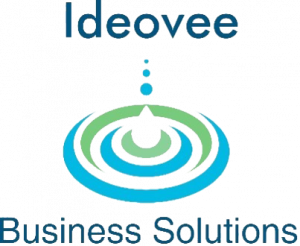
Optimizing Heavy Equipment Businesses: The Strategic Role of ABM in Inventory Management
In an intensely competitive heavy equipment market, the challenges of high capital investment and inventory management are crucial considerations for B2B companies engaged in leasing, auctioning, selling, maintaining, and servicing heavy machinery. Account-Based Marketing (ABM) is a strategic approach that not only helps to address the financial strain of heavy equipment businesses but also significantly impacts inventory management metrics.
When our sales team reduces the sales cycle and consequently improves inventory turns, then Finance and Sales become increasingly aligned on common goals as part of a single, unified Revenue Team.
One of the key advantages of ABM is its ability to shorten sales cycles, “sales acceleration”. Sales acceleration is the strategic process of expediting and optimizing the sales cycle, encompassing activities and tactics aimed at rapidly moving prospects through the various stages of the sales funnel to shorten the time between initial engagement and conversion. We do this through Measurement and ROI (ABM Step 7), which fuels continuous improvement in our sales cycle and the customers’ buying experience. The goal is to enhance efficiency, increase deal velocity, and ultimately drive faster and more effective sales outcomes, optimally with an increasing deal size in terms of revenue to our B2B business.
By carefully aligning sales, finance, and marketing efforts with high-potential accounts, ABM facilitates a more efficient sales process. This acceleration, in turn, plays a crucial role in improving inventory turns—a vital metric in evaluating inventory management performance.
Inventory turns, also known as inventory turnover, inventory turnover rate, or inventory turnover ratio) measures how swiftly a business sells its inventory. Calculated by dividing the cost of goods sold by the average inventory value over a specified period, high inventory turnover signals operational efficiency. ABM, through its personalized and targeted approach, contributes to the acceleration of sales, directly impacting the inventory turns equation.
The equation for inventory turns, represented as sales divided by inventory cost, embodies the essence of this metric. By ensuring a quicker turnover, heavy equipment companies utilizing ABM can enhance their financial health. Improved inventory turnover brings multiple benefits, from reducing carrying costs and freeing up cash for strategic investments to promoting more efficient operations and aiding in informed decision-making related to pricing, manufacturing, marketing, and purchasing.
Depending on the function measuring inventory turns, the calculation by Finance or Operations (Supply Chain) of inventory turns looks like this:

In primary sales market for heavy equipment (sales of new equipment), the strategic use of an inventory float helps to reduce interest costs, where the original equipment manufacturer (OEM) allows B2B companies to delay (for a limited and preset period of time) payments on inventory until a sale is realized. However, it is imperative that the inventory turns over within that limited and preset period of time. If not, improvement to the sales cycle needs to become a priority and closely measured activity for our Revenue Team.
This approach effectively keeps interest and carrying costs down for businesses engaged in leasing, auctioning, selling, maintaining, and servicing heavy equipment. However, it’s important to note that while this financial maneuver proves advantageous in the primary market for new equipment, it typically does not translate to the secondary market for after-sales or second-hand equipment. The dynamics of the secondary market, including varying equipment conditions and demand fluctuations, often require different financial strategies, emphasizing the need for tailored approaches in the heavy equipment market.
Beyond improving inventory management and addressing the challenges associated with high capital investment, ABM offers several additional benefits for B2B heavy equipment companies in the leasing, auctioning, selling, maintenance, and servicing sectors:
- Enhanced Customer Retention: ABM enables personalized communication and engagement with key accounts, fostering stronger relationships. This personalized approach contributes to customer loyalty and retention, reducing the cost and effort associated with acquiring new customers.
- Targeted Upselling and Cross-Selling: By understanding the specific needs and preferences of key accounts, ABM facilitates targeted upselling and cross-selling opportunities. This strategic approach can increase revenue from existing clients and maximize the return on investment.
- Brand Awareness and Thought Leadership: ABM allows heavy equipment companies to position themselves as industry leaders through targeted content and thought leadership initiatives. This not only enhances brand awareness but also attracts potential clients who recognize the company’s expertise and reliability.
- Efficient Resource Allocation: ABM ensures that marketing resources are allocated strategically, focusing on high-value accounts with the greatest potential for revenue generation. This efficient allocation helps optimize marketing budgets and efforts.
- Improved Sales and Marketing Alignment: ABM promotes collaboration and alignment between sales and marketing teams. By jointly defining target accounts, creating personalized strategies, and sharing insights, these teams can work cohesively towards common goals, leading to improved overall performance.
- Accelerated Sales Velocity: The targeted and personalized nature of ABM contributes to quicker decision-making processes within key accounts. This acceleration in the sales velocity is particularly valuable for heavy equipment companies dealing with high capital investment, as it shortens the time between initial engagement and closing deals.
- Data-Driven Insights for Strategic Decisions: ABM relies on data analysis to understand client behavior and preferences. This data-driven approach provides valuable insights that can inform strategic decisions related to product development, service enhancements, and overall business strategy.
- Adaptability to Market Trends: ABM allows heavy equipment companies to stay agile and adapt to evolving market trends. By closely monitoring key accounts and industry changes, companies can adjust their strategies proactively to align with market demands.
- Competitive Advantage: Companies employing ABM gain a competitive edge by demonstrating a customer-centric and strategic approach. This can be a crucial differentiator in a competitive market, attracting key accounts and setting the company apart from competitors.
- Measurable ROI and Performance Metrics: ABM enables the measurement of Return on Investment (ROI) through key performance indicators (KPIs) specific to targeted accounts. This measurable approach allows companies to assess the effectiveness of their ABM strategies and make data-driven adjustments.
ABM offers several tools to help address the challenges of high capital investment for B2B heavy equipment companies. From improving inventory management to fostering customer loyalty and driving revenue growth, ABM is a comprehensive strategy for a cross-functional revenue team to sustain and improve upon revenue success.
Pairing ABM strategies with the challenges faced by heavy equipment B2B businesses is transformative. By focusing on personalized engagement, ABM not only addresses the high capital investment hurdles but also actively contributes to the enhancement of inventory management metrics, ensuring these businesses are well-equipped for sustained success in a competitive market.

